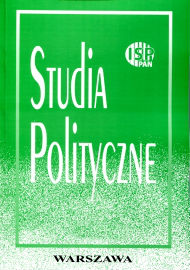Czy możliwy jest demokratyczny Iran?
Is a democratic Iran possible?
Author(s): Piotr Hanaj, Bartłomiej NowotarskiSubject(s): Politics / Political Sciences
Published by: Instytut Studiów Politycznych PAN
Summary/Abstract: Could a subsequent wave of the democratic revolution which hit the Arab countries of North Africa and the Middle East also reach the Islamic Republic of Iran? The article analyses the domestic prerequisites for a successful revolution and the democratisation of the Iranian theocracy and includes findings as to whether it is, indeed, a theocracy or if it is, quite simply, an authoritarian state and thus somewhat easier to destabilise than a totalitarian regime. The authors identify the crucial changes which occurred both in society and in the structures of the parties and state alike following the authorities’ perpetration of fraud in the 2009 presidential elections. The analysis was conducted across six categories, namely, the authorities’ vertical and horizontal responsibilities; the religious rigour of Shia Islam; the democratic enclave; the vying within the autocratic ruling elite itself; and the post-totalitarian phase. Progress in the direction of opening up to democracy was found in the majority of the categories, though not of a kind whereby the collapse of the ayatollahs’ dictatorship by any means other than revolution might be anticipated within the next few years. The answer to the question posed in the title reads as follows: a democratic Iran is possible, but not just yet, all the more so, inasmuch as the way in which the West’s restrictions and the spectre of an armed conflict provoked by the prospect of Tehran’s possessing nuclear weapons might influence the attitude of society and the vigorous in-fi ghting among the conservative elite is an unknown quantity.
Journal: Studia Polityczne
- Issue Year: 2013
- Issue No: 31
- Page Range: 11-37
- Page Count: 27
- Language: Polish

